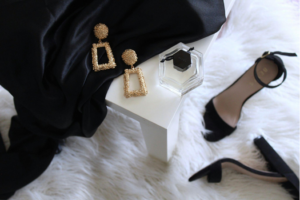Fashion isn’t just about clothes; it is a form of self-expression. It is like music when it comes to harmony in that elements just blend and become one.
Achieving balance isn’t just following trends; it’s understanding how pieces complement. This harmony reflects your personality, elevating your style. Mastering this balance elevates your fashion sense, showcasing your understanding of style and harmony in every look.
Understanding Fashion Harmony
The ability to create a harmonious and appealing look by carefully pairing color, pattern texture and silhouette is achieved through fashion harmony. It includes choosing accessories and clothes that match to enhance the ensemble. Personal style preferences inform choices, such as favorite colors, flattering cuts, and preferred fabrics.
Harmony also depends on the balance between contrast and similarity as either element can be disruptive when there is too much of it. For instance, a collared blazer when paired with long flattering skirts provides an appealing contrast and yet still looks coordinated.
Finding balance refers to trusting your instincts and making decisions based on what feels organic. With practice, mastering fashion harmony allows one’s style to effortlessly stand out, reflecting individual taste and confidence.
The Role of Accessories in Fashion Harmony
Accessories are fashion’s secret enhancers, capable of elevating a simple outfit or disrupting its harmony if chosen carelessly. The right accessory can unify an ensemble. Take, for instance, a brightly colored scarf against a monochromatic outfit, serving as a focal point without overwhelming. Similarly, a well-matched handbag or shoes can enhance the overall harmony.
However, moderation and relevance are essential. Over-accessorizing or selecting pieces that clash can disrupt the look. The overall goal is to select accessories that do not compete with the outfit but rather only complement it. For instance, minimalist attire pairs well with eye-catching jewelry. In contrast, elaborate outfits need simple accessories.
Choosing the Right Watch for Your Style
Watches are unique accessories that marry functionality with fashion, influencing the harmony of your overall look. They should fit with your lifestyle and personal style so you’re dressed appropriately for each particular occasion. For example, a traditional leather strap watch works for classic refinement while smartwatches appeal to modern convenience.
Consider how the watch’s color and design harmonize with your attire. A bright band can add playfulness to neutrals, while a sleek design complements busy ensembles. The goal is seamless integration, allowing the watch to enhance rather than dominate your style. Remember to choose the right watch for your style, as it reflects your identity.
Color Coordination and Balance
Color is an integral part of establishing fashion harmony. The perfect palette of colors can embellish, while a wrong choice will look out-of-sync. Understanding basic color theory and how different colors interact can help you achieve a balanced and cohesive outfit.
- Complementary Colors: Examples of these include the opposite colors on the wheel, such as blue and orange. When mixed properly, they produce a lovely contrast.
- Analogous Colors: These are adjoining colors in the color wheel, such as blue, green and purple. They provide a more harmonious combination.
- Neutral Colors: Black, white, gray and beige are the basis of a flexible wardrobe. They can be combined with almost any color to balance an outfit. For example, a bright-colored top can be balanced with another neutral tone like a pair of beige slacks. This combination does not look too loud or too bland.
If you are wearing a dress or shirt that is patterned with various colors, use one of the colors for your accessories. If you are attempting to have a monochromatic style then eliminate all of the other hues and use different tints from one color. For example, wearing different shades of brown and beige.
Keep in mind that the colors you pick must not only look good together but also mirror your personality and current mood. Use the power of colors to achieve a better balance in your sense of style by trying out various color blends and learning what suits you best.
Mixing Textures and Patterns
Textures and patterns in different forms create depth, while being interesting enough to enhance the details of your outfit. Many other combinations of textures can make your outfit more eye-catching as well.
For example, combining a cozy plush sweater with sleek leather pants achieves the perfect blend of comfort and sophistication. In the same way, a well-thought out mixture of patterns brings dynamism and a touch of your personality into the outfit.
To avoid visual chaos, stick to a consistent color scheme across patterns. For example, pair a navy-striped shirt with a floral skirt in matching tones. Varying the scale of patterns also prevents dominance like pairing a large print with a smaller one, such as a floral dress with polka dot accessories.
Balancing textures and patterns creates dynamic, stylish and harmonious outfits where no single element overpowers. Remember to choose pieces that resonate with your personal style.
The Importance of Proportion and Fit
Fashion harmony does not stop at color, fabric and use of accessories. It must also fit well and complement your body. The correct fit highlights your better features and ensures a pleasant silhouette, while the wrong one can mess up the overall harmony.
Proportion is balancing the visual weight of your outfit by working with the length and volume. For instance, match a fitted top with a flowing skirt or combine an overly-sized jacket and tailored trousers to achieve proportion.
Fit is all about how the clothes conform to your body, resulting in comfort and confidence. It is important, however, to know your measurements and learn what cuts or styles are most flattering for your body shape.

Conclusion
Fashion harmony is about putting together the different components of your wardrobe to deliver an aesthetically pleasing appearance. Adopting these principles will enable you to display your style in an innovative way.
However, it is important to remember that fashion goes beyond simply following trends; it should dictate a style that defines your personality. Through practice and attention to detail, you can master the art of fashion harmony and feel confident that the outfits you wear will showcase who you are.






